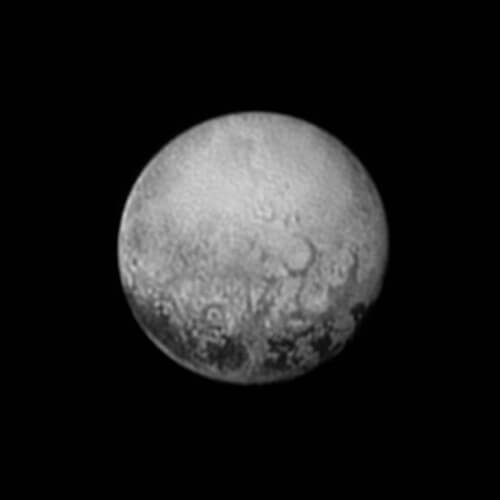This is the last chance to view this side of Pluto that will be hidden from New Horizons' eyes during the transit

Five billion kilometers have been covered by the New Horizons spacecraft in the last decade, now it is closing the last million kilometers, which it will complete by tomorrow (Tuesday) in the afternoon Israel time. the dwarf
These spots are on the side of Pluto that always faces its large moon Charon—the side that will be invisible to New Horizons during the July 14 flyby. New Horizons principal investigator Alan Stern describes the image as the best last look anyone will get of Pluto's far side for decades to come.
The spots are connected to a dark belt that surrounds Pluto's equator. What will continue to interest researchers is their similar size and shape. "It's strange to find such regularity in space," says Kurt Neiber from NASA headquarters in Washington and a scientist in the New Horizons project. Jeff Moore from NASA's Ames Center in California is also as curious as him: "We cannot explain whether these formations are planes or it is just a difference in the brightness of completely flat surfaces.
The diameter of the largest spot is now estimated at about 450 kilometers. Compared to previous images, we see that the darker areas are more complex than initially seen, while the borders between the dark and light areas are irregular and clearly differentiated.
In addition to solving the puzzle of the spots, the geological, geophysical and imaging teams are looking into identifying other terrain features such as impact craters created when smaller objects hit the dwarf planet. "When we combine this image of the far side with the composition and colors that the spacecraft has already photographed but not yet transmitted to Earth, we are expected to be able to read the history of this side of Pluto.
Being the fastest spacecraft ever launched, it will close the distance and reach an altitude of 12,500 kilometers above the surface on the side opposite to the one it took on Sunday. in which a heart-shaped configuration has also gained public interest.
More of the topic in Hayadan:

8 תגובות
Yes, Luke, and it's a shame that it passes and doesn't go into orbit around Pluto
Question: Is 12,500 km the smallest distance New Horizon will be from Pluto?
That's how you save on the wrong things
It didn't even cost a billion dollars.. Secondly, 5 million km is really far, and consider that the moon we see is about 15 times closer and the moon is also 1000 km bigger than Pluto, so tomorrow we will be really close and the images will be very, very clear
How can it be that multi-billion dollar missions produce images at the level of a webcam?